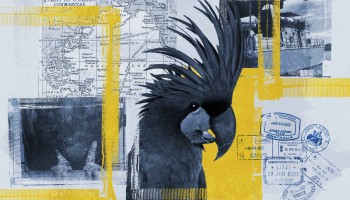With contraband animal parts often in demand far from the regions where the species are indigineous, “legitimate transport service providers, including freight forwarders, airlines, and shipping companies, may be utilized by these criminals and exposed to the risks of inadvertently being a link within illegal wildlife trade chains,” said the report.
For live creatures, air carriers, courier services and sometimes even small fishing ships, are the most common transporters for traffickers, however, container shipping is the go-to choice “for smuggling of large quantities of wildlife products such as elephant ivory, pangolin scales and timber, due to cost effectiveness, ability to ship large volumes and heavy weight, and a low likelihood of detection,” Traffic said.
Over the years, Nigeria has emerged as a key export point, while Vietnam is a major importer.
In 2019 alone, some 90 tons of pangolin scales and 15.5 tons of elephant ivory were seized on container ships heading from Africa to Asia.
Graft has only exacerbated the problem, according to the report.
“Corruption is a critical enabler of IWT, taking place at sourcing, transit, and export stages and involving public and private sector abuse of power and trust,” the report said. Nor is it just corrupt port officials who are accepting bribes.
“Wildlife trafficking networks regularly attempt to exploit relationships with a small number of complicit or unscrupulous transport company employees to facilitate the smuggling of wildlife products,” said the report.
Unfortunately, finding the illicit shipments among the mass amounts of cargo moved each year is no simple task. Some 72–90% of wildlife products are trafficked by sea and around 90% of international trade in goods by volume are carried by sea, said Livia Esterhazy, CEO of WWF-New Zealand.
“You can see how detecting illegal wildlife trade can be like looking for a needle in a haystack," she added.
To combat the Illegal trade, the report listed a number of red flags shipping companies can look out for to identify whether a shipment may be concealing contraband wildlife.
Discrepancies in weight and appearance, commodities that don’t seem to match the destination’s level of technology or development and vague cargo descriptions and inconsistent valuations would be common red flags, while common smuggling schemes would include hiding elephant tusks in or among timber shipments, using sliced ginger to conceal the unique smell of pangolin scales and hiding illegal shark fins among similar looking legal shipments.






